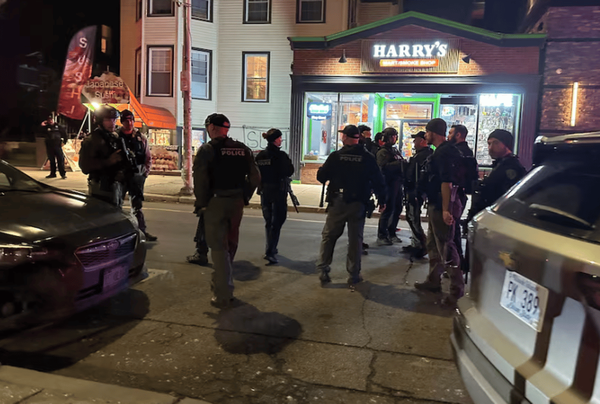
On Thursday 24 November, a fire broke out on the 15th floor of an apartment block in Urumqi, capital of the western Chinese province of Xinjiang. At least 10 people died, all from the minority Uyghur community. Outrage grew at the fact that the deaths were entirely avoidable, caused by China’s draconian Covid lockdown policy. Some of the victims were sealed in their flats; the building’s fire exits were locked; fire engines were delayed by Covid barriers. Demonstrations and vigils in response soon spread across the country.
Ten days later, after initially denying the tragedy had anything to do with its Covid policies and seeking to suppress all news of the protests, the seemingly immovable Chinese Communist party cracked. President Xi Jingping acknowledged the protesters and began to moderate China’s lockdown policies. So why did the deaths of 10 Uyghurs generate such a powerful reaction? What do these 10 days that shook the party tell us about the nature of protest and of Chinese society?
First, it is important to acknowledge that the initial reaction of the Chinese state – deny and suppress – is not unique to China or to authoritarian regimes more generally. When faced with social disorder, most governments respond typically by blaming the protesters, claiming either that they have either gone mad in a mob, are bad people, or else (in a hybrid version) that bad agitators manipulate the mad mob in order to create mayhem.
We saw this narrative play out in the UK, in 2011, when David Cameron referred to the riots that started in Tottenham, north London, after the shooting of Mark Duggan, as “criminality pure and simple”. As in China, this condemnation was a distraction from the social roots of unrest, both the broader context of injustice and grievance and the immediate reactions of the authorities.
Riots are often dismissed as mere outbursts of anger and frustration. At the start of the pandemic, there were fears that people would riot against British lockdown measures. But people don’t riot simply because they face hard times. Indeed, a study by Bobby Duffy at King’s College London during this first lockdown showed that nearly half (44%) of the population were suffering as a result of the Covid measures: they were anxious, depressed, unable to sleep or stop thinking about Covid. But 93% of these people were still adhering to the measures, 85% of them advocated additional police powers and 70% thought that the government had been too slow to act.
Riots are complex, and even in a world of growing hardship, rare. At least three factors are necessary for them to occur. First, it is not enough for government measures to be harsh. They must also be seen as illegitimate. People will suffer a lockdown so long as they believe it is necessary and serves their individual or collective interests. But, as Anthony Fauci has recently stressed, lockdown was never an anti-Covid strategy. It was an emergency measure enforced while governments rolled out other measures like test and trace, air filtering and vaccines.
If these other measures don’t arrive, there are two options. Either nothing gets better once lockdown is lifted, or lockdown goes on for ever. That is precisely what was happening in China. In particular, China’s vaccines are less effective and vaccination rates are low. As infections mount, driven by the lack of a coherent strategy, the government responds by enforcing ever more extreme lockdowns. People have been forced into quarantine centres, children have been separated from parents and families have been sealed into their own flats, sometimes without adequate food. Meanwhile, Chinese people can watch TV images of crowds elsewhere in the world enjoying everyday life.
People realised that they were not suffering for their own cause. Rather, lockdown embodied the way that party leaders were pursuing their own cause at the expense of the people’s suffering.
The second factor involves transforming this abstract sense of illegitimacy into a concrete grievance. This generally occurs through a precipitating event that embodies all that has gone before. The Urumqi fire certainly did that. People sealed in blazing homes, innocent victims (including a child) whose suffering was created, not alleviated, by uncaring authorities. Here was a focus around which generalised discontent could turn into actual protest.
Finally, the escalation of protest into a major national phenomenon depends on the reaction of the authorities to the initial protest. The authorities threw fuel on the fire by failing to engage, to acknowledge fault or to address problems. Rather, they denied that there were any problems, they denied that anyone was protesting while at the same time repressing the protesters.
Perhaps the most striking aspects of all is the way that, in their suffering at the hands of the state, those Uyghurs who died in the fire became emblematic of the suffering of the Chinese people as a whole. A shift is under way whereby those who were once an entirely excluded “them” are increasingly viewed as “us”. Meanwhile the party and state are increasingly reassigned to the position of “them”. Ironically, despite the fact that most Uyghurs remain too terrorised to protest themselves, many of the majority Han Chinese see what happened to the Uyghurs as happening to them. This, combined with people being emboldened by prior protests, explains the rapid spread of unrest and pushback. What we have witnessed is not mindless copycatting. It is a process of empowered identification.
China’s protests show us that, far from being mindless, crowds and collective protest are highly sophisticated and give us insight into the underlying society. Particularly from those who do not normally have voice, “riots are the voice of the unheard”, as Martin Luther King famously said. It also shows us that no regime – not even the mighty Chinese state – can entirely withstand being seen as an alien power. That is, one that speaks over the people rather than for the people.
Stephen Reicher is a professor of psychology at the University of St Andrews, vice-president of the Royal Society of Edinburgh, and a fellow of the British Academy
Do you have an opinion on the issues raised in this article? If you would like to submit a response of up to 300 words by email to be considered for publication in our letters section, please click here.







